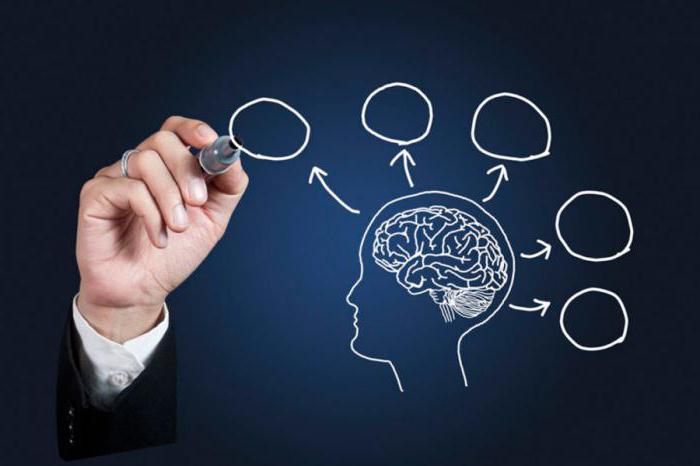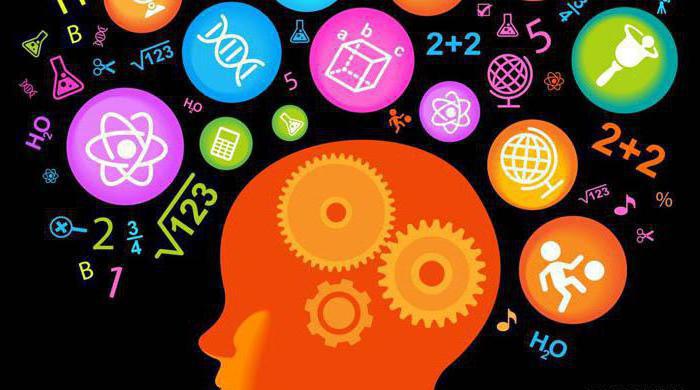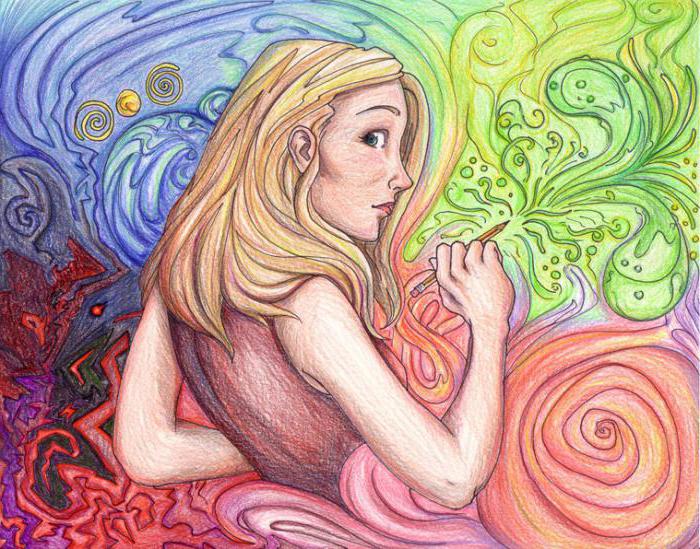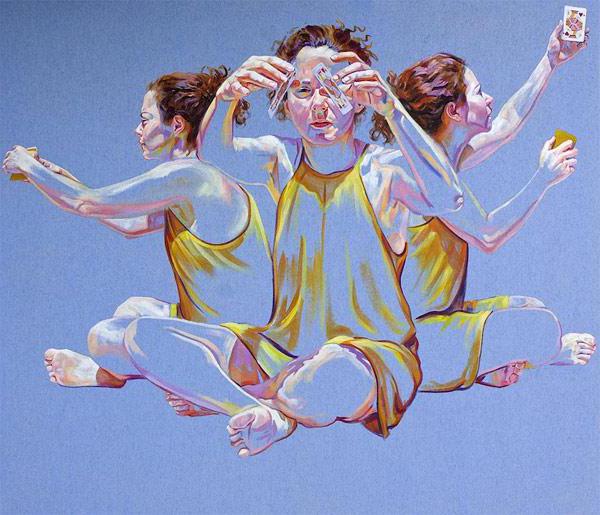Each person has the skill to adapt to the situation, but everyone does it their own way. There are many behaviors. A psychological portrait of a person is an example of how, using a description of a person’s personality traits, one can predict his actions and reactions. This is extremely useful when applying for jobs, admission to educational institutions and more.
The psychological portrait of a person is an example of a qualitative textual interpretation of a person’s characteristics. Its compilation is one of the most complex and important tasks of modern psychology.
Compilation of a psychological portrait - why is this needed?
The psychological portrait of the child helps the teacher and teacher to find an individual approach to each pupil. Identification of the characteristic features of each baby will allow to competently build the process of development and education.
A psychological portrait of a person is often compiled when applying for a job. With its help, managers are better able to organize the activities of personnel in the company, to increase the efficiency and success of each member of the team.
Psychological portraits of criminals differ from the characteristics of law-abiding citizens, since they are characterized by emotional-volitional deformations, criminal motives and negative social interests. The problem of the identity of fraudsters and murderers is central to the forensics and other sciences that are related to crime. Psychological portraits of criminals help the investigator to understand the motives of a committed illegal act.
How many people, so many personalities, because each person is an individual. Briefly consider the main components that make up the psychological portrait of a person.
Temperament
Observing people in different situations, you can always notice the differences in their behavior and lifestyle. This is due to the temperament of a person under observation. So, temperament is one of the main factors on which the psychological portrait is based.
Modern psychology under the "temperament" refers to the characteristics of the nervous system and the psyche of the individual. This is not only the rhythm, pace and intensity of the psychological process, but also its content. Temperament is the biological foundation of personality. These characteristics are inherited, which is why they are difficult to change. A psychological portrait of a person should reflect the main features of a person’s temperament: his style of behavior, ways to help him organize his activities, and so on.
Based on certain psychological principles, you can find your approach to the carrier of each of the four types of temperament.
Sanguine
Motto: trust, but verify!
The advantages of this type of temperament are cheerfulness, sociability, enthusiasm and responsiveness, and the minuses are scattered, over-communicative, frivolous, prone to arrogance, superficiality and insecurity. The psychological portrait of a person marked “sanguine” is as follows: the individual is always happy to promise something so as not to offend the supplicant, but he does not always keep his word, so you need to check if he fulfilled the promise.
Choleric
Motto: not a minute of peace!
The principle of communication with choleric is based on the use of its advantages: dedication, mobility, energy, passion and determination. At the same time, it neutralizes the disadvantages of this type of temperament: aggressiveness, intolerance, restraint, conflict. A psychological portrait with the characteristic “choleric” should suggest that a person should always be busy with something. Otherwise, he will direct all his energy and activity to the team and can decompose it from the inside.
Phlegmatic person
Motto: Take your time!
Among the strengths of phlegmatic are consistency, patience, activity, stability, reliability and self-control. Cons - this is indifference, dryness, slowness and "thick-skinned". The psychological portrait of a person marked “phlegmatic” means that he cannot work if time is in short supply, because he needs his own individual pace: he does not need to adjust it, he will draw up a work schedule and do everything on time.
Melancholic
Motto: do no harm!
The psychological portrait marked “melancholic” is as follows: the strengths of the personality are softness, the ability to sympathize, humanity, high sensitivity and goodwill. The disadvantages of this type of temperament are suspiciousness, shyness, low working capacity, isolation, daydreaming and vulnerability. Never yell at a melancholic person, do not press on him, do not give harsh and harsh instructions, as this person is extremely sensitive to intonations and is too vulnerable.
It is very difficult to find an individual who would fully meet a certain temperament, usually the dominant of one of them is observed.
Intelligence
Intelligence is a system of mental processes that ensures the realization of a person’s ability to assess the current situation, make decisions and regulate his behavior in accordance with this. As a rule, intelligence is important if the situation is non-standard - as a symbol of the individual’s learning of everything new.
Jean Piaget, a psychologist from France, called interaction with the outside world through adaptation to him one of the most important functions of intelligence. Or, in other words, the ability to navigate in conditions and it is advisable to build your own behavior.
The core of intelligence is a person’s ability to isolate the basic properties in a situation and build their behavior in accordance with them. The Soviet psychologist S. L. Rubinstein in his works considered this category as a type of personality behavior - “smart behavior”.
Character
Character is a combination of individual characteristics of a person that develop and manifest in communication and activity. A psychological portrait of a personality is an example of how the revealed traits of character help to determine typical behaviors.
Character traits are called stable properties and qualities of human behavior, which have become the properties of the personality itself. A psychological portrait is an example of displaying the most typical and essential features of a human character.
Its structure consists of 4 groups of traits that express the personality’s attitude to various aspects of activity: to oneself, to work, to society and the collective, as well as to things.
Ability to communicate
Communication is an extremely delicate and subtle process of interaction between people. It is in it that the most multifaceted reveals the individual characteristics of each participant in the process, therefore this characteristic is extremely important for such an interpretation of personality as a psychological portrait.
An example of the most obvious function of communication is the transfer of information: any information, content and meaning. This side of communication is called semantic or semantic. Transmission has an impact on a person’s behavior, his actions and actions, as well as the organization and condition of his inner world.
In general, they distinguish the informational, managing, cognitive functions of communication, in addition, there is a function of the exchange of mental states and emotions.
Emotionality
Since the time of the ancient Greek thinker Plato, the whole mental life of a person has been divided into three relatively independent units: mind, will and emotions.
If the will and mind are subordinate to man, at least to some extent, then emotions always arise regardless of our desire. This is a reflection of personal significance and assessment of situations for the process of human life in the form of feelings and experiences. This is the manifestation of subjectivity and involuntary emotions. The ability to manage emotions is necessary primarily for health and ambition.
What does it mean to be able to manage emotions? Most often, this statement implies their concealment. It hurts, but we won’t show it, it’s a shame, but we pretend that we are indifferent, insulting, but outwardly we will show only irritation and anger. But from the fact that a person does not show his emotions, they do not become weaker, rather on the contrary, or take the form of protection - aggression.
Abilities
The psychological portrait of a person is an example of a description of a person’s internal warehouse, which includes such a characteristic as abilities.
In psychology, abilities are considered as a special property of the psychological system, which is expressed in a certain level of its productivity. Accuracy, stability and speed of operation are quantitative parameters of the productivity of abilities. They are measured by solving problems of a certain degree of complexity, resolving conflicts, etc.
The degree of solvability of the contradictions between the relationship of the individual and the properties of the individual is the level of ability. The most successful option is when there is a tendency to a certain field of activity, coupled with interest in this matter.

Abilities are divided into special and general. General can predetermine a tendency to a rather extensive field of activity. They are formed by the development of intelligence and personality traits. Special acts as a socio-psychological basis for the development of cravings for a specific field of activity: research, music, teaching, creativity and more.
Self-esteem
Self-esteem expresses a certain emotional-value attitude to oneself that has developed in a person on the basis of self-knowledge. A psychological portrait is an example of how a person’s self-esteem affects all spheres of life, because it involves evaluating one’s own abilities, actions, goals, qualities and capabilities, as well as one’s place in society. It is overpriced, understated and adequate.
Directivity
Motivation of activity and behavior, satisfaction of needs - all this lies at the heart of the orientation of the individual (on the task, on himself or on communication).
Only security and satisfaction can suit someone. physiological needs. And for others, besides this, it is equally important to satisfy social needs, the need for self-expression, and also to realize their creative abilities. The main task of the manager and psychologist is to identify the needs, beliefs and interests of each person and determine the direction of its motives.








